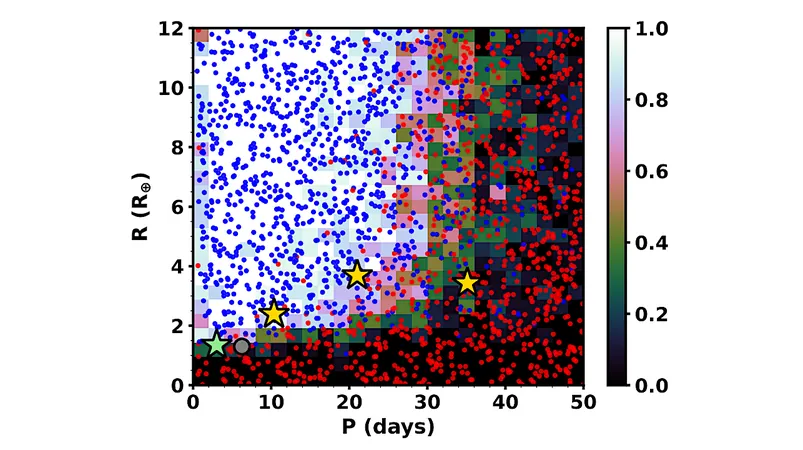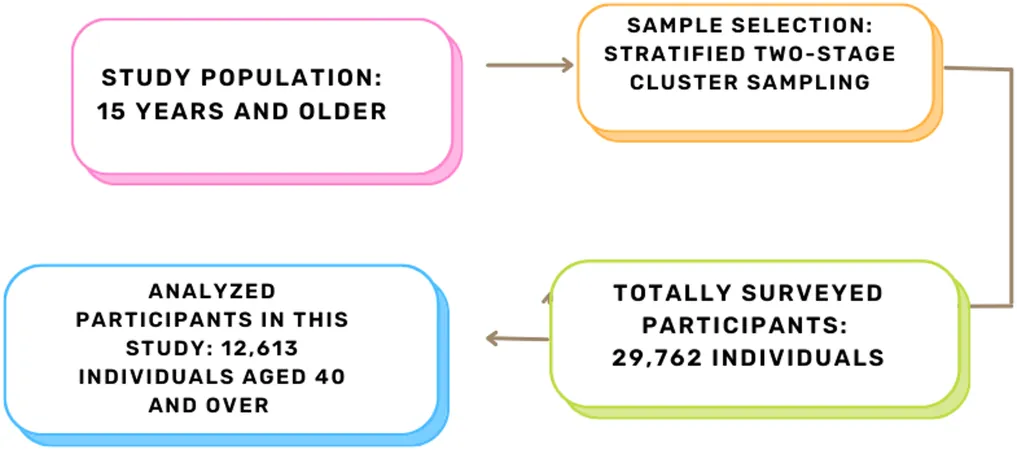
Unveiling the Secrets of Young Exoplanets: The Fascinating Case of TOI-2076
2025-05-13
Author: Ming
Exploring the Mysterious World of Young Exoplanets
Young, multi-planet systems are like time capsules in the cosmos, allowing scientists to peek into the evolutionary processes of planets shaped under similar conditions. These systems, particularly those less than 500 million years old, provide unique insights into how worlds evolve over time.
Meet TOI-2076: A Three-Planet System
At the heart of this exploration is TOI-2076, a captivating system that hosts three exoplanets, ranging between 2.5 to 4 times the size of Earth, each orbiting their star within a mere 10 to 35 days. But there's more to discover! All three planets are set to be observed in the JWST's third cycle for detailed transmission spectroscopy.
A New Discovery: TOI-2076 e Shines Bright
The recent revelation of TOI-2076 e—a smaller but intriguing planet measuring just 1.35 times the size of Earth and orbiting its star every 3.02 days—adds a fresh layer of intrigue to this stellar ensemble. By analyzing various astronomical metrics such as rotation periods and the lithium equivalent widths of nearby stars, researchers have updated the age of this stellar system. They estimate TOI-2076 and its neighboring system, TOI-1807, to be around 210 million years old, plus or minus 20 million years.
A Call to Action for Astronomers
The discovery of TOI-2076 e is not just a milestone; it’s an inspiration for astronomers worldwide. It urges them to revisit known transiting systems, especially with the fresh data provided by TESS and innovative search techniques. Who knows what other hidden gems could be lurking in the cosmos?
Young vs. Mature Systems: A Tantalizing Comparison
The findings highlight a stark contrast between young multi-planet systems found in stellar clusters and their mature counterparts, usually identified through Kepler. Mature systems tend to display a more uniform structure in terms of orbital periods and size. However, the addition of TOI-2076 e disrupts this uniformity in TOI-2076, prompting further investigation into the evolution of planetary systems.
The Brilliant Minds Behind the Discovery
This exciting breakthrough was made possible by the teamwork of brilliant astronomers, including Madyson G. Barber and her colleagues Andrew W. Mann, Andrew Vanderburg, Andrew W. Boyle, and Ana Isabel Lopez Murillo.




 Brasil (PT)
Brasil (PT)
 Canada (EN)
Canada (EN)
 Chile (ES)
Chile (ES)
 Česko (CS)
Česko (CS)
 대한민국 (KO)
대한민국 (KO)
 España (ES)
España (ES)
 France (FR)
France (FR)
 Hong Kong (EN)
Hong Kong (EN)
 Italia (IT)
Italia (IT)
 日本 (JA)
日本 (JA)
 Magyarország (HU)
Magyarország (HU)
 Norge (NO)
Norge (NO)
 Polska (PL)
Polska (PL)
 Schweiz (DE)
Schweiz (DE)
 Singapore (EN)
Singapore (EN)
 Sverige (SV)
Sverige (SV)
 Suomi (FI)
Suomi (FI)
 Türkiye (TR)
Türkiye (TR)
 الإمارات العربية المتحدة (AR)
الإمارات العربية المتحدة (AR)